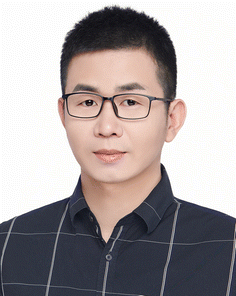Materials Horizons Emerging Investigator Series: Prof. Dr Yandong Ma, Shandong University, China
Dr Yandong Ma is a professor at the School of Physics, Shandong University. He received his BS and PhD in Physics from Shandong University in 2009 and 2014, respectively. Next, he started work as a postdoctoral researcher at Jacobs University Bremen in Germany with an emphasis on the electronic and magnetic nature of two-dimensional materials. Later, he continued work as a postdoctoral researcher at Leipzig University in Germany working closely with his previous lab. In September 2017, he joined Shandong University as a professor. In 2020/2021, Dr Ma was featured on the list of “Highly Cited Chinese Researchers”. His current research interests focus on exploring spin and valley physics, including topological magnetism (e.g., skyrmions, bimerons) and valleytronics, through theoretical methods.
Read Yandong Ma's Emerging Investigator Series article ‘Layer-polarized anomalous Hall effects in valleytronic van der Waals bilayers’ ( https://doi.org/10.1039/D2MH00906D ) and read more about him in the interview below:
MH: Your recent Materials Horizons Communication proposes a mechanism for realizing the LP-AHE in valleytronic van der Waals bilayers by interlayer sliding. How has your research evolved from your first article to this most recent article and where do you see your research going in the future?
YM: During my PhD, I was working on the electronic and magnetic properties of two-dimensional (2D) materials, and I found the 2D world really fascinating. For my postdoctoral stay, I continued to work in this field and focused more on the unique physics of 2D lattices. After I joined Shandong University, I received several rounds of funding for my work on valley physics. This allowed me to realize my ideas with the solid support of other researchers. This work has directly evolved from our previous work on valley physics. In the future, we will focus on exploring more phenomena of valley physics.
MH: What aspect of your work are you most excited about at the moment?
YM: In our work, we are very excited that the interaction between the out-of-plane ferroelectricity and A-type antiferromagnetism in bilayer systems gives rise to layer-locked Berry curvature, as well as the layer Hall effect. This mechanism is demonstrated in a series of real valleytronic materials, including bilayer VSi2P4, VSi2N4, FeCl2, RuBr2 and VClBr. These insights and phenomena provide a significant new direction to realize the layer Hall effect and explore its application in electronics.
MH: In your opinion, what are the most important questions to be asked/answered in this field of research?
YM: I believe there is still a lot to do in the field of the layer Hall effect. One of the most important and urgent questions is how to facilitate shifting of the Fermi level to generate the carriers while ensuring the robustness of the band features against external perturbation. Also, it is important to achieve long-range exchange interactions at room temperature.
MH: What do you find most challenging about your research?
YM: Sometimes, verifying theoretical predictions in experiments is most challenging. I think many theoretical researchers meet a similar difficulty in that exciting discoveries are waiting for their experimental realizations.
MH: In which upcoming conferences or events may our readers meet you?
YM: I am planing to join the 2023 Materials Research Society (MRS) Spring Meeting held from April 25–27 in San Francisco and the APS Meeting held from March 5–10, 2023 in Las Vegas.
MH: How do you spend your spare time?
YM: I am very happy to spend my spare time with my family. I love playing with my child. At weekends, I usually go for a hike in the mountains or go to dinner with my group members.
MH: Can you share one piece of career-related advice or wisdom with other early career scientists?
YM: For research, the rate of failure to success is very high. Collect experiences from failure, be patient with your research and do not give up easily.
| This journal is © The Royal Society of Chemistry 2023 |

